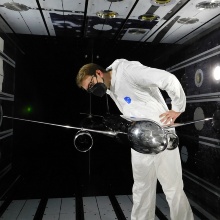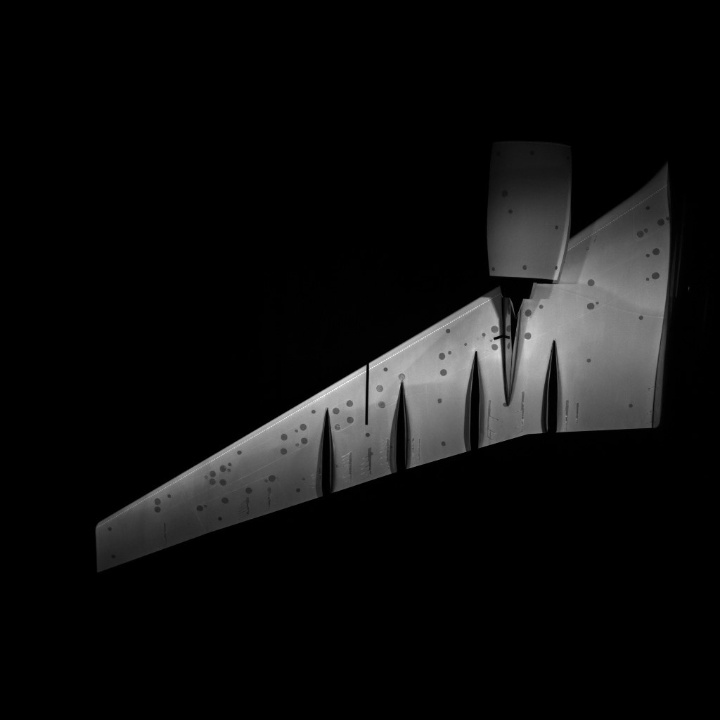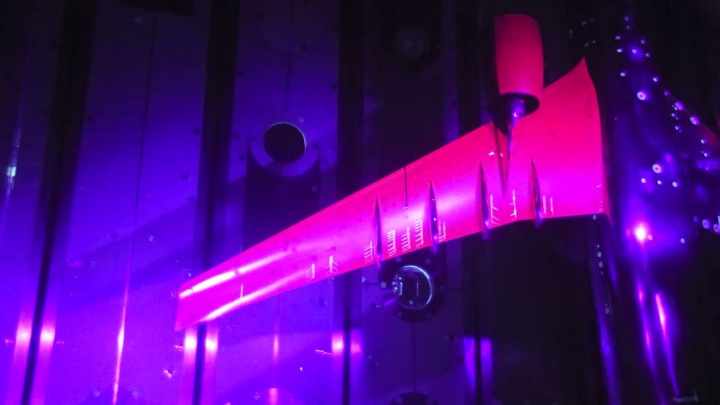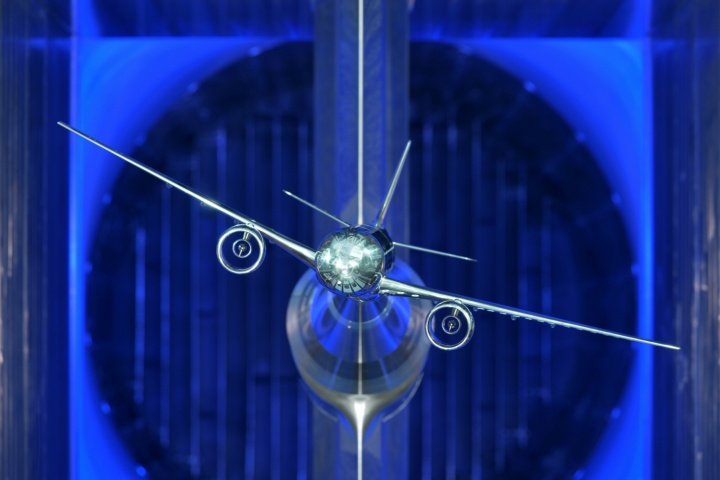Surface Pressure Measurements of the Aircraft with Ultra-High Bypass Ratio Nacelles
The second test entry of FOR2895 was conducted in the European Transonic Windtunnel in December 2021. The test featured the first installation of new UHBR through flow nacelles designed by DLR. The nacelles were mounted to the XRF1 wind tunnel model, which was provided by Airbus. The scope of the test was to assess the impact of the UHBR nacelles on the aerodynamics at high-speed off-design conditions by enabling the comparison of the results with the first test campaign, which dealt with the clean wing configuration without nacelles.
In addition to the flow conditions measured during the first test entry, supplementary PSP measurements were conducted for lower Reynolds numbers. The reasoning for this was driven by the fact that the installation of UHBR nacelles results in the formation of a semi-open channel on the wing lower side bounded by the fuselage, wing lower surface, nacelle and pylon. In this region, the flow becomes locally supersonic resulting in compression shocks, which in turn interact with the boundary layer flow and cause shock-induced separation comparable to the buffet phenomena on the upper surface of the wing. Numerical investigations of these phenomena were carried out using hybrid RANS/LES methods within FOR 2895, which initially could only be carried out at lower Reynolds numbers due to the high computational effort involved. Therefore, additional PSP measurements at these lower Reynolds numbers were necessary to collect corresponding validation data.
However, the influence of the UHBR nacelles was not only evident on the lower wing surface but also on the upper wing surface. The installation of the nacelles has an influence on the transonic flow and the shock systems on the wing and the associated buffet phenomena at high angles of attack. A repetition of the measurement points from the first measurement campaign allowed to characterize the influence of the UHBR nacelles on the wing aerodynamics with a high level of detail.
The test campaign was very successful, yielding a large database of model performance data as well as steady and unsteady PSP data across a variety of flow conditions. The results will help the researchers of FOR2895 to deepen the understanding of high-speed stall at high Reynolds numbers including the influence of the UHBR nacelle. In addition, the experimental findings will serve as validation data for the application of new numeric approaches such as hybrid RANS/LES methods.





